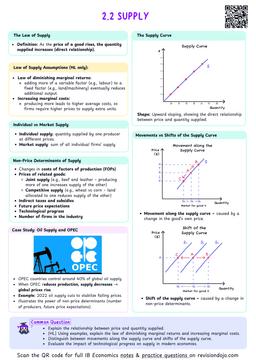Macroeconomic objectives
Key goals of governments in achieving economic stability include sustainable growth, low inflation, low unemployment, balanced trade, and income equality.
- Governments aim to achieve multiple macroeconomic objectives simultaneously, including price stability, full employment, economic growth, and balance of payments stability.
- However, pursuing one objective often requires trade-offs with others, creating complex policy dilemmas.
Low Unemployment and Low Inflation
Defining Low Unemployment
- The lowest sustainable unemployment rate an economy can achieve without triggering accelerating inflation is called the natural rate of unemployment (typically 4–6%).
- Frictional, structural, and cyclical unemployment all contribute to the natural rate. When these types remain low, the natural rate is also low.
Students often think 0% unemployment is ideal and achievable. However, some unemployment is natural and even necessary for a healthy economy!
Defining low inflation
Low inflation is typically defined by central banks as a stable price level with inflation around 2%.
Example- The European Central Bank (ECB) aims for inflation “below, but close to 2%.”
- When inflation surged to 10.6% in 2022, the ECB took dramatic action by raising interest rates.
- Many students think zero inflation is best.
- Actually, a small positive inflation rate helps the economy adjust to shocks and prevents deflation!
- In an ideal world, we would want both low inflation and low unemployment.
- Low unemployment drives economic growth and higher GDP, while also reducing government spending on welfare.
- Low inflation ensures price stability and economic certainty, which are vital for planning.
- Low inflation also boosts international competitiveness, as exports become cheaper, leading to greater demand.
- However, these objectives are not fully independent. They are interconnected through wage pressures and aggregate demand, meaning there is often a trade-off.
- During the 1960s, Australia maintained unemployment below 2% while experiencing strong economic growth.
- This “golden age” demonstrated how low unemployment can boost an economy’s overall performance.
- How do we determine the “optimal” balance between unemployment and inflation?
- This raises questions about measuring social welfare and making economic trade-offs.
Trade-off between unemployment and inflation (HL only)
- The relationship between unemployment and inflation was first identified by A.W. Phillips in the 1950s, based on observations of wage rates and unemployment data.
- This discovery led economists to develop several theoretical explanations for why this trade-off occurs:
- Wage-Price Spiral
- Labour Market Dynamics
- Aggregate Demand Effects
Wage–Price Spiral
- Lower unemployment leads to higher wage demands.
- Higher wages increase production costs.
- Businesses raise prices to protect profits.
- Workers then demand higher wages to maintain purchasing power.
Labour Market Dynamics
- Low unemployment gives workers stronger bargaining power.


